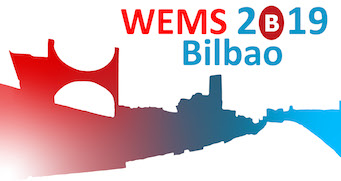Speaker
Description
TiN thin films are interesting gate materials in future non-Si based metal-oxide semiconductor devices. TiN has also been experimentally confirmed with strong surface plasmon resonance at the near infrared spectral range. In water splitting experiments, TiN nanoparticles were found to outperform Au nanoparticles in the enhancing photocurrent under solar irradiation. However, the performance of a TiN thin film is closely related to the concentration and mobility of lattice defects in the thin film structure. This makes a local atomic scale study of TiN thin films an ever-growing demand. Here we present the results obtained with the Emission 57Fe Mössbauer spectroscopy on an epitaxial TiN thin film from our recent paper (https://doi.org/10.1016/j.apsusc.2018.09.107). With the help of theoretical calculations, our results show that most implanted Fe ions are with 2+ valence state and locate at the Ti sublattice in the bulk-like single crystalline grains. The interstitials Fe reside only at the grain boundaries. A small percentage of nitrogen point defects (vacancy VN and interstitial NI) are observed in the bulk-like crystalline grains. The temperature dependent delicate mobility of intestinal N and lattice N has been also noticed. The titanium vacancy (VTi) is only detected at the grain boundaries and can be recovered with annealing up to 813 K. annealing. However, no evidence of ferromagnetism due to dilute implantation of 57Mn/57Fe and or structural defects in the film is obtained. This study demonstrates that the Emission Mössbauer spectroscopy is a powerful tool to study the local configuration and mobility of the lattice defects in TiN thin film, as well as the possibility of defect-induced or dilute-ferromagnetism of the thin film on an atomic scale.
On top of the conventional application of vanadium nitride (VN) as abrasive materials and cutting tools for its high hardness. VN is currently found renowned interest in its use as a pseudocapacitive electrode in an electrochemical capacitor, owing to its excellent electrochemical property, such as good electronic conductivity, thermal stability, high density and high specific capacitance.VN is also found interest as a practical catalyst because of its high catalytic activity and selectivity comparable to those of noble metals. Moreover, VN is superconductor with a transition temperature of 6–9 K. Among these applications, thin film and nanostructured VN are more favorable than the bulk form owing to the large specific surface area and the rich defect-mediated electrochemical & catalytic behaviors. Therefore, local control and characterization of the lattice defects and their mobility in the thin film and nanostructured VN are very important. Here we intend to give a brief introduction on the first result obtained on an ultra-thin epitaxial VN thin film by the Emission Mössbauer spectroscopy.




